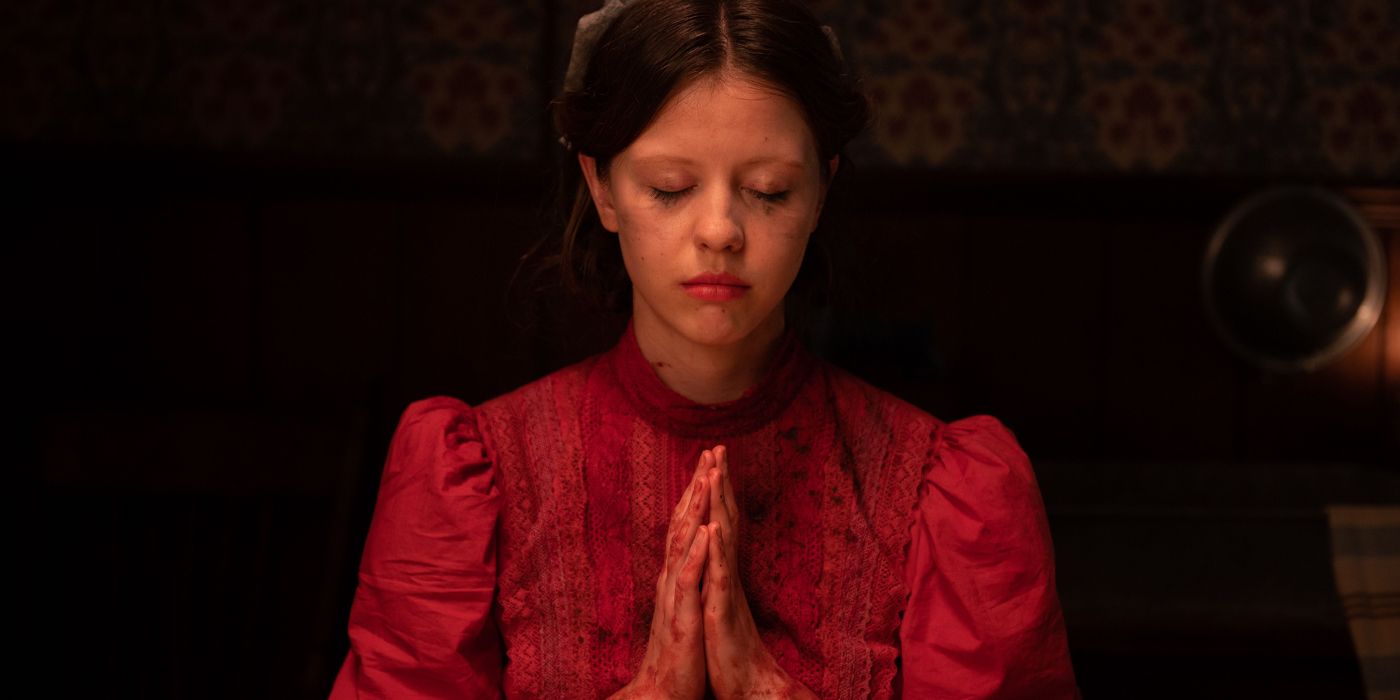Ti West’s X is one of 2022’s most acclaimed horror movies. It follows a batch of 1970s filmmakers who clandestinely shoot a skin flick in a farmhouse they rented. When the elderly homeowners discover what’s going on they aren’t horrified, they’re hornified. And when their libidos aren’t respected by the young hotties the bodies start piling up dead. Mia Goth played both the hot new porn ingénue and the old woman, Pearl. It is established in X that Pearl’s jealousy of the young women to do what they please with their bodies and their profession is what brings her rage to a fever pitch — because she too had dreams of being a star at their age. X debuted just this past March, but there’s already a prequel, Pearl, filmed in secret and announced only after production ended, that may as well be titled Pearl: First Kill.
Personally, X’s intentions felt hypocritical and ageist; old people desiring sex was not just the motive for the killing but also, in the way it was filmed with prolonged takes and excessive makeup, it felt like the audience was supposed to constantly be as equally and gleefully grossed out by elderly sexuality as they were by the intense bloodletting. For a movie that started out as sex-positive, it ended up exclusionary in that approach. I still was interested in Pearl, however, because a prequel would likely remove that angle entirely.
Refreshingly, West is attempting a different mood with Pearl, mimicking classic Disney animation moments to show her attempts to be cheerful with an audience of farm animals for her dance routines. Inside the homestead, however, she has an overbearing mother (Tandi Wright) and a father (Matthew Sunderland) so ill from the Spanish flu that he’s confined to a wheelchair and unable to speak—only his lips sucking in liquid morphine prove that he’s still alive. Pearl’s cheerfulness also includes feeding animals to the alligator in the marsh behind the house. This, too, is filmed in pastiche, with a bright, smiling ode to 1950s sitcoms. It’s all done with an exaggerated hilt for most of the film’s runtime until Goth delivers a staggering monologue that would rival Rebecca Hall’s in Resurrection for length and emotional rawness. It’s a thoughtful breaking point in the film that reveals an interest by West (and co-writer Goth) to not just make Pearl an odd psycho killer but to grant her confusion at what she’s doing, who she’s even speaking to, and how stifled she feels by other people making every decision for her. It kicks back into an old-fashioned sitcom-styled ending, but this monologue is the meat of the movie. It helps that Goth has a great scene partner in newcomer Emma Jenkins-Purro, who isn’t sure how to back away without setting her off.
Pearl does end up enhancing X a little bit by essentially chronicling all the shortcomings and repression that drove Pearl mad. But it’s not without its own shortcomings. Chiefly, that it isn’t remotely scary. West and Goth are mostly interested in applying camp via typical melodrama motifs within a horror film. The bloodshed is sparse, and every kill is telegraphed so far ahead, that there’s no tension or surprise. Outside of Pearl seeing an old stag film and the aforementioned monologue the filmmaking is mostly dialed into being a lark. Which brings me back to what I didn’t like about X, is the condensation of its characters, who are mostly present for an attempt at scholastic genre filmmaking. But the scholarly pursuit – pornography and 1950s Hollywood — are both low-hanging fruit.
Pearl was written while the X set was on quarantine during the height of COVID. It was shot back-to-back. Its plot features lives stalled by both the Spanish flu and World War I. It makes for interesting production notes, but it surely will more so please people who thought X was funny and less those who appreciated the tension and gore. The first film was a love letter to slasher films of yore. And Pearl tries to be many different eras of melodrama — the grin and bear it era and the more recent era of tears for being stuck in the wake of stifling misfortunes. Taken together it’s more interesting as a film thesis than it is as a film product. But at least now it’s slightly less ageist.
Grade: C+


